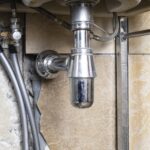Understanding heat pumps and their benefits
Heat pumps are innovative devices that transfer heat from one place to another. They work by extracting heat from the air, ground, or water sources. These systems can provide both heating and cooling for homes and buildings. Heat pumps are highly efficient, often delivering 3-4 times more energy than they consume. They can reduce energy bills by up to 50% compared to traditional heating systems. Additionally, heat pumps have a longer lifespan, typically lasting 15-20 years with proper maintenance.
One of the main advantages of heat pumps is their environmental friendliness. They produce fewer carbon emissions than fossil fuel-based heating systems. In fact, heat pumps can reduce a home’s carbon footprint by up to 75%. These devices also offer consistent temperature control throughout the year. Heat pumps can operate in various climate conditions, even in temperatures as low as -15°C. Moreover, they can be integrated with smart home systems for enhanced control and efficiency.
Heat pumps require less maintenance compared to traditional heating systems. Annual servicing is usually sufficient to keep them running optimally. These systems also contribute to improved indoor air quality by filtering and dehumidifying the air. Heat pumps can be used in conjunction with other renewable energy sources, such as solar panels. This combination can further increase energy efficiency and reduce reliance on the grid.
The initial cost of installing a heat pump can be higher than traditional systems. However, the long-term savings on energy bills often offset this expense. Many countries offer incentives and rebates for heat pump installations. These financial supports can make the transition to heat pump technology more affordable for homeowners. It’s important to consult with a qualified professional to determine the most suitable heat pump system for your specific needs.
Exploring air source heat pumps
Air source heat pumps extract heat from the outside air, even in cold temperatures. These systems consist of an outdoor unit and an indoor unit connected by refrigerant pipes. The outdoor unit contains a fan that draws in air and passes it over a heat exchanger. This process extracts heat from the air, which is then compressed and transferred indoors. Air source heat pumps can provide both space heating and hot water for domestic use.
There are two main types of air source heat pumps: air-to-air and air-to-water systems. Air-to-air heat pumps distribute warm air directly into the living space through vents. Air-to-water systems, on the other hand, heat water for use in radiators, underfloor heating, or hot water cylinders. Air source heat pumps are relatively easy to install and require minimal groundwork. They are particularly suitable for well-insulated homes with low heating requirements.
The efficiency of air source heat pumps is measured by the Coefficient of Performance (COP). A typical COP for these systems ranges from 2.5 to 3.5, meaning they produce 2.5 to 3.5 units of heat for every unit of electricity consumed. The performance of air source heat pumps can be affected by outdoor temperatures. However, modern systems can operate efficiently even in temperatures as low as -25°C. Regular maintenance, such as cleaning the outdoor unit and checking refrigerant levels, is essential for optimal performance.
Air source heat pumps are generally quieter than traditional boilers. The noise level of the outdoor unit typically ranges from 40 to 60 decibels, comparable to normal conversation. These systems can be integrated with existing heating systems as a hybrid solution. This approach allows for flexibility in choosing the most efficient heating method based on current conditions. When properly sized and installed, air source heat pumps can meet 100% of a home’s heating and hot water needs.
Delving into ground source heat pumps
Ground source heat pumps, also known as geothermal heat pumps, extract heat from the ground. These systems use a network of underground pipes filled with a water and antifreeze mixture. The pipes can be laid horizontally in trenches or vertically in boreholes. Heat is absorbed from the ground and transferred to the heat pump unit inside the building. Ground source heat pumps can provide space heating, cooling, and hot water for domestic use.
The efficiency of ground source heat pumps is generally higher than air source systems. They typically have a COP of 3.5 to 4.5, meaning they produce 3.5 to 4.5 units of heat for every unit of electricity used. Ground temperatures remain relatively stable throughout the year, usually around 10-12°C at depths of 1-2 meters. This stability allows ground source heat pumps to maintain consistent performance regardless of outdoor air temperatures.
Installing a ground source heat pump requires significant groundwork. The amount of land needed depends on the system’s capacity and the type of ground loop used. Horizontal loops typically require 50-80 square meters of land per kilowatt of heating capacity. Vertical boreholes can be used where space is limited, but they are generally more expensive to install. The lifespan of ground loops can exceed 50 years, while the heat pump unit itself typically lasts 20-25 years.
Ground source heat pumps are extremely quiet in operation, as all components are located indoors or underground. They have low running costs and can reduce heating bills by up to 70% compared to electric heating. These systems require minimal maintenance, with annual checks usually sufficient. Ground source heat pumps can be particularly beneficial for larger properties or those with high heating demands. They can also be used for cooling in summer by reversing the heat transfer process.
Investigating other heat pump technologies
Water source heat pumps extract heat from bodies of water such as lakes, rivers, or wells. These systems work similarly to ground source heat pumps but use water as the heat source. Water source heat pumps can achieve high efficiency levels, with COPs often exceeding 4.5. They require a consistent water source with a minimum temperature of 5°C. These systems are ideal for properties located near suitable water bodies.
Hybrid heat pumps combine a heat pump with a traditional boiler. This setup allows the system to switch between the heat pump and boiler depending on which is more efficient under current conditions. Hybrid systems can provide a balance between efficiency and performance, especially in colder climates. They offer flexibility and can be a good transitional solution for homeowners looking to move towards renewable heating.
Absorption heat pumps use heat as their energy source instead of electricity. They can be powered by natural gas, solar-heated water, or geothermal-heated water. These systems are particularly useful in areas where electricity is expensive or unreliable. Absorption heat pumps have lower efficiency compared to electric heat pumps but can still offer significant energy savings compared to traditional heating methods.
Other heat pumps include thermodynamic systems, which can extract heat from the air even in sub-zero temperatures. These systems are often used for water heating and can operate efficiently in various climates. CO2 heat pumps use carbon dioxide as a refrigerant, offering high efficiency and reduced environmental impact. They are particularly effective for water heating applications. Ongoing research and development in heat pump technology continue to improve efficiency and expand applications.
Choosing the right heat pump for your needs
Selecting the appropriate heat pump depends on various factors including climate, property size, and existing heating system. In moderate climates, air source heat pumps can be highly effective. For colder regions or larger properties, ground source systems might be more suitable. Consider the following factors when choosing a heat pump:
- Heating and cooling requirements
- Available space for installation
- Local climate conditions
- Budget for initial installation and long-term operation
The size of the heat pump is crucial for optimal performance. An undersized system will struggle to meet heating demands, while an oversized one may cycle on and off frequently, reducing efficiency. Professional assessment is essential to determine the correct size. Heat pump efficiency is measured by the Seasonal Coefficient of Performance (SCOP) for heating and the Seasonal Energy Efficiency Ratio (SEER) for cooling. Look for systems with high SCOP and SEER ratings for better energy efficiency.
Consider the noise levels of the system, especially for air source heat pumps with outdoor units. Check local regulations regarding noise and placement of external units. Some heat pumps offer additional features such as Wi-Fi connectivity for remote control or integration with smart home systems. These features can enhance convenience and allow for more precise energy management.
Finally, ensure that the installer is certified and experienced in heat pump installations. Proper installation is crucial for the system’s performance and longevity. Obtain multiple quotes and ask for references from previous customers. Remember that the cheapest option may not always be the best in the long run. Consider the total cost of ownership, including installation, running costs, and maintenance, when making your decision.





